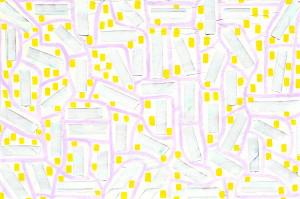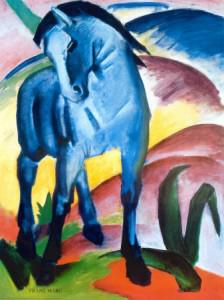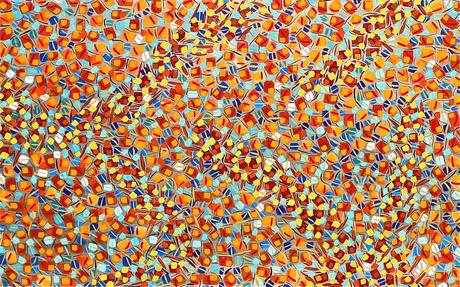It’s hard for me to look at a steak and not think of Aaron Copland. After all the VO on the TV commercial says, “Beef…It’s what’s for dinner.” With Hoe-Down from the Rodeo Suite blazing in the background (yes, I know this commercial is disturbing to my vegan & PETA friends).
I grew up in the west and traveled with my parents extensively from Arizona to Colorado from the Dakotas to Texas, and everything in between. As a lad my mind was filled with a million images that provided a staging area for an over-active imagination. When I heard Copland’s music it created a musical backdrop to many of these images, and somehow tied the creative process of creating altogether.
As I matured I started looking east. In fact, New York held the most fascination. Everything the west wasn’t.. is the island of Manhattan. Enter Gershwin and Rhapsody in Blue. I don’t think New York would have it’s fascinating appeal if it wasn’t for this incredible eclectic composer. For every image from gritty to grandure there is a Gershwin note that describes.
From New York onto Europe and most specifically Paris. Being a young American, it just doesn’t get much better than Gershwin’s American in Paris. You can’t separate the two, and oh the fantasies!
http://youtu.be/wlvzGT1Ta2w
A Baton VS a Brush
A composer can create a masterful painting without picking up a brush. A composer works with a tonal palette.
Consider the music composed by Mussorgsky for the artist Victor Hartmann – a tribute to his friend, who died suddenly in 1873 at the age of 39. Hartman was sn artist of energy, but would no doubt be lost to history if it wasn’t for the composer Mussorgsky. He composed a graphic suite entitled Pictures at an Exhibition; it is considered a classic of the virtuoso piano repertoire, an epic work of such grand conception that its orchestral potential was immediately recognized. A musical work of art stimulated by the visual works of a painter.
Artists and composers are both visual and auditory people they often stimulate and inspire each other. Music and visual art share many descriptive terms that are exactly alike. It’s fascinating when you can see just how many artistic terms are used to describe music and conversantly with art.
Visit:
http://www.princetonol.com/groups/iad/Files/art-music.htm
MUSIC – color: Color ( or timbre - pronounced “TAM-ber”) includes all the aspects of a sound that do not have anything to do with how high or low it is, how loud or soft, or how long or short. In other words, if a flute plays a note, and then an oboe plays the same note, for the same length of time, at the same loudness, you can still easily tell the two notes apart, because a flute sounds different from an oboe. This difference is the color of the sound. See Basic Elements of Music
ART: color - Produced by light of various wavelengths, and when light strikes and object and reflects back to the eyes. One of the elements of art. Color has hue (color name), intensity and value.
MUSIC: contrast Contrast of musical materials sustains our interest and feeds our love of change; it provides variety to a form.
ART: contrast - Difference between two things. There can be contrast in value, color, pattern and texture.
MUSIC: composition a written piece of music.
ART: composition the art of combining the parts of a work to produce a harmonious whole.
A description of my art using the musical term: HARMONY
MUSIC: harmony the simultaneous sounding of tones producing a musical meaningful sound.
ART: harmony a state of “visual rightness” andcompatibility between colors, or parts of adesign, or composition giving an effect of anaesthetically pleasing whole.

Rod Jones Artist - PARIS -36”w x 24”h oil on canvas
Gershwin and Copland as well as many other composers from just about every genre of music can stimulate your art. Organized musical notes floating around in your head can be converted into brush strokes. There’s something magical about music. It takes your mind in profound directions. You can’t listen to Copland without envisioning the west, horses, cowboys and square dancing. New York’s Madison Avenue grabbed Copland and gave us a theme song for beef.
Constructing and deconstructing a painting that has been stimulated by a piece of music can be pretty profound. If listening to Copland makes you envision a rodeo, and rodeo’s are filled with horses, and you decide to paint a horse…the music can trigger abstract thinking and your composition can achieve an elevated and interesting take on the simple paining of a horse.

Franz Marc- Blue Horse
Music Motivates & Stimulates the Creative Mind
Here is something to try…grab Gershwin’s Rhapsody in Blue or An American in Paris…put it on your iPod or ??? with your headset, grab your camera and head out into the city. You will be amazed what you start focusing on with the mind’s eye and that camera. It won’t be the skyline (per say), you will feel the energy and see nuances that you never knew existed. Take these visions back into the studio and witness the magic as it is revealed on your canvas.
For those completely immersed in nature, try the same experiment with Vivaldi’s Four Seasons. I have…virtually all four seasons. It lifts your spirit into a new visual awareness of the majesty of nature. From an acorn to a giant tree displaying their golden fall leaves, you just look…and hearing the four compositions can be life altering.

Rod Jones Artist -FALL REVEALED 48”w x 30”h - Oil on Canvas
It’s now fall…let Vivaldi stimulate your own composition.

